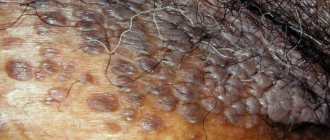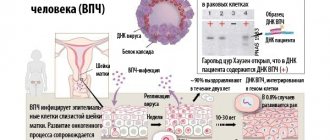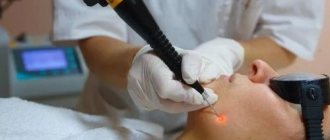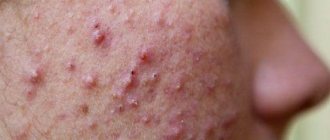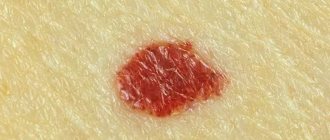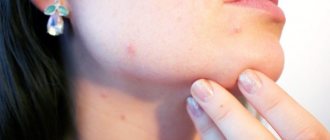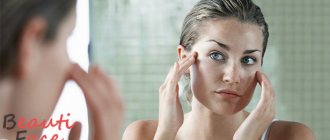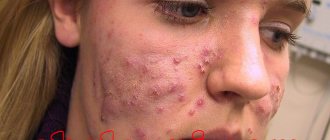Various dermatological defects significantly complicate the lives of patients and bring not only physical but also psychological discomfort. A common problem for people of all ages is flat warts.
Pathology can develop in different parts of the body, interferes with the normal performance of household manipulations, and provokes complications, especially with permanent damage.
Causes
Flat warts on the face can be treated only after identifying the root cause. The provoking factor is the human papillomavirus. According to research, more than 70% of the world's population is infected with this virus. It has many strains: some of them are safe and have a low degree of oncogenicity, others are very dangerous and often provoke cell malignancy.
Strain No. 3 is to blame for the appearance of warts. After entering the body, it does not manifest itself, but under certain conditions it leads to the occurrence of similar disorders. The main reasons are considered to be the following:
- weakened immunity, frequent viral and cold pathologies;
- unbalanced diet, following a strict diet for a long period;
- chronic vitamin deficiency;
- frequent hypothermia of the body;
- promiscuity, ignoring barrier contraceptives;
- pathologies accompanied by suppression of human immunity;
- regular stress, disturbance of psycho-emotional state;
- overwork on a constant basis;
- bad habits;
- pathologies of the thyroid gland;
- hormonal disbalance;
- diseases of the stomach and intestines;
- violation of personal hygiene rules, which provokes the accumulation of a large number of pathogenic microorganisms on the surface.
An additional provoking factor is considered to be regular minor injuries to the skin, which lead to the rapid development of neoplasms and increase the risk of cell malignancy.
There are several ways HPV can be transmitted from one person to another. The most common is the sexual route - it occurs in more than half of all registered cases. In addition, the virus can be transmitted from mother to child during childbirth.
The contact and household route of infection is somewhat less common, but the possibility cannot be excluded, especially when using common personal hygiene items and utensils.
Prevention
To prevent the development of papillomatosis and prevent the formation of flat warts on the face, a person should adhere to the following prevention recommendations:
- Maintain personal hygiene.
- Give up bad habits and switch to a healthy lifestyle.
- Do not borrow other people’s bath accessories, slippers, toothbrushes and other personal items.
- Fortify the body and strengthen the immune system in different ways. You can take Immunal and a decoction of Eleutherococcus, or you can drink lingonberry and cranberry juices, rosehip infusions, black and red currant compotes. To strengthen the immune system, honey is eaten in the absence of allergies (only 1 tablespoon per day). To regularly replenish the body with vitamins, it is recommended to eat a lot of fresh vegetables, herbs, and various fruits.
Clinical picture
Treatment for flat warts on the face largely depends on the symptoms. Some patients do not immediately notice the appearance of growths, especially in the back or other hard-to-reach areas of the body. Pay attention only when unpleasant symptoms appear.
At the initial stage, there are few warts, they are small and painless. The color of the growths may not differ from the skin tone, but may be yellowish, grayish, reddish or even light brown. The shape of the growths is usually correct, but there are exceptions. The surface is smooth, sometimes rough, the growth is flat and protrudes slightly above the surface of the skin.
As the pathology progresses, more and more neoplasms appear . They are most often localized on the arms, face, neck, chest area, upper back, and sometimes on the feet. After several more warts grow, the patient begins to feel discomfort. During hygiene procedures, they are injured and rubbed with clothing.
With regular injury, some formations may bleed, which is very dangerous for the patient. If treatment is not started at this stage, even more growths will appear. Their number sometimes reaches 100 pieces. Pain accompanies the patient constantly, possibly increased body temperature, decreased appetite, weakness, and drowsiness.
Warts can become inflamed, the surrounding epidermis turns red and becomes very sensitive. Further, a change in the structure of the growth, an increase in size, bleeding, darkening, and increased pain is possible. Such symptoms are considered a dangerous signal, and the patient is advised to immediately consult a specialist.
Types of warts
Flat rashes often appear on the face. They look like small raised plaques on the skin with a diameter of 2 mm. More common in young children. The proposed photos of flat warts will help you get acquainted with their superficial appearance.
Vulgar papillomas are a common phenomenon among adolescents. They look like a round protrusion on the skin up to 5 mm in height. Initially, warts match the skin color, and then change it to a gray tone. Often paired warts appear, which can only be distinguished by their size.
Threaded papillomas are most often localized on the neck or in the armpits. They look like rounded hills above the skin.
Pointed papillomas are pathological growths that look like the head of a cauliflower. The places of their formation are the groin area, the oral cavity, and the genitals. These types of warts are transmitted after sexual contact.
Diagnostic methods
You can get rid of flat warts on the hands and other parts of the body only after a diagnostic examination. If severe symptoms occur, you should definitely contact a dermatologist who will help eliminate the formations. At the first appointment, the doctor examines the affected area and interviews the patient. It is important to clarify the characteristics of nutrition, lifestyle, professional activities, and the presence of a permanent sexual partner.
A mandatory stage of diagnosis is a clinical blood and urine test and a biochemical blood test. Additionally, they may prescribe a blood test for hormones to identify abnormalities. An important element of the examination is a blood test to determine the HPV strain. After this, the specialist usually makes a final diagnosis and prescribes therapy.
Sometimes a dermatologist may suspect that the pathology is developing into a malignant neoplasm. Then a cytological examination of the tissue and taking a sample of the growth for biopsy is required. The results will help confirm or refute assumptions.
Radio wave therapy - advantages and disadvantages
The procedure for radio wave removal of a tumor is carried out without prior preparation and allows you to get rid of the growth within a very short time. The entire operation takes no more than 2 minutes. The manipulation is performed using the Surgitron medical device, which creates narrow-directional radio waves. The radio wave knife is aimed at the tumor for a short period and excises it with a powerful discharge in one precise movement.
The advantages of the technique include clarity and accuracy, minimal risk of damage to surrounding tissues, a high degree of protection against infections and a rapid process of postoperative tissue restoration. During the operation, tissue is cauterized, which prevents the possibility of bleeding and the risk of complications. The radio wave method is effective both for single tumors and for the presence of multiple warts. It is most often used to localize flat warts on the feet and toes.
The disadvantages of the method include a fairly extensive list of contraindications for which the use of radio wave therapy is impossible (infectious pathologies, hypertension, cancer, allergies, diabetes, acute conditions, etc.).
Treatment with drugs
The viral etiology of warts allows the use of medications in their treatment that affect not only the external manifestations, but also the activity of the virus from the inside. Typically, specialists prescribe antiviral and other medications that are highly effective:
- Antiviral tablets Acyclovir are used to treat juvenile warts on the hands, as well as growths in adults on any part of the body. They have a pronounced therapeutic effect due to the destruction of viral DNA. Thanks to a ten-day course, you can suppress the activity of HPV, prevent the appearance of new growths, and strengthen the immune system.
- Cycloferon is an effective antiviral medicine available in the form of an injection solution. It is used more often in a hospital setting, in a course of 10 intramuscular injections. Independent use at home is not recommended, since violation of the regimen can significantly reduce the effectiveness of therapy.
- Viferon is a medication with an antiviral effect, available in the form of rectal suppositories and ointments for external use. It has a pronounced effect in the fight against HPV in adults. After just 7 days of treatment, the activity of the virus is suppressed, reducing the likelihood of complications. The medicine contains human interferon, which affects the DNA of the virus.
- Salicylic ointment - often used for small warts. It has keratolytic properties due to the content of salicylic acid. The use of the product is permitted only after consultation with a specialist, as negative reactions, irritation, and peeling of the skin may develop.
- Cauterizing medications are used only as prescribed by a doctor. The most popular solution is Ferezol and Verrukacid. The preparations contain phenol, which has the property of removing tumors. When applied to a wart, the solution penetrates its structure and leads to tissue death. After some time, the tumor darkens, shrinks, becomes dry and disappears on its own.
The last group of drugs is very dangerous. Violations of the instructions can cause severe allergies, urticaria, or even Quincke's edema.
Hardware removal
Tumors can be removed using hardware techniques when drug treatment does not bring the expected result or symptoms of inflammation appear. Today there are several effective methods that are less traumatic and safe.
The cryodestruction method is often used for flat warts, since they do not have a deep core and you can get rid of several growths in one session. The essence of the procedure is to expose the neoplasm to liquid nitrogen, which has a temperature of about -170−200 degrees. Thanks to the influence of this substance, the wart cells die, and after a while they fall off on their own. A small stain remains at the site of the growth, which heals over time.
Electrocoagulation is also often used to remove flat warts. The procedure is performed under local anesthesia as it is painful. The neoplasm is exposed to low frequency current, which leads to tissue death and coagulation of blood vessels. Over the course of several days, the growth decreases in size, changes color, becomes dry, and then disappears. Sometimes a scar may remain in the area of the wart, especially if it is large.
Laser removal today is considered the most gentle, as it helps to remove the growth quickly and avoid the appearance of scars. The essence of the method is to expose the wart to laser beams that come from a special apparatus. Local anesthesia with a 2% solution of Lidocaine or Novocaine will help prevent pain. Several warts can be removed in one session. Repeated testing is usually not required.
Any of the techniques is considered safe and involves minimal trauma to surrounding tissues, but sometimes the clinic cannot offer such services due to lack of equipment. If urgent removal is necessary, the doctor suggests a surgical method. During the operation, the specialist excises the affected tissue within the healthy tissue, applies sutures and a bandage. The recovery period after such an intervention is longer than with other methods of removal. Today, surgical excision is used much less frequently.
Choosing a method for excision of flat warts
Surgical excision or scraping of skin tumors with a scalpel is considered an outdated method that has many disadvantages. These include the need for anesthesia, high traumatic manipulation, suturing and the presence of postoperative scars. But the most important disadvantage is the fact that during the operation there is contact with the patient’s blood and the virus does not disappear anywhere, which is a threat of relapse in the future.
The choice of surgical treatment method for flat warts is made after examination and consultation with a doctor. In some cases, surgery is possible only after preparation; this mainly concerns patients who have chronic diseases. In the presence of any exacerbations and infectious pathologies, preliminary treatment is required, and then the immediate elimination of warts.
The patient and the doctor decide which method of removing flat warts to prefer after a preliminary examination and consultation.
Attention!
This article is posted for informational purposes only and under no circumstances constitutes scientific material or medical advice and should not serve as a substitute for an in-person consultation with a professional physician.
For diagnostics, diagnosis and treatment, contact qualified doctors! Number of reads: 259 Date of publication: 08/30/2018
Dermatologists - search service and appointment with dermatologists in Moscow
Folk remedies
Treatment of flat warts at home involves the use of traditional medicine recipes that help remove small growths in the absence of signs of inflammation. The following are considered the most effective means:
- Raw potatoes are considered a good way to eliminate tumors. It is necessary to use undamaged, mature tubers, preferably the pink variety. For treatment, potatoes should be washed, peeled, and grated. Spread the resulting pulp on gauze and apply to the affected area. The exposure time of the composition is 1 hour. This must be repeated twice a day until the wart disappears. Usually 7-10 days are enough.
- Table vinegar 9% several decades ago was often used to eliminate tumors on different parts of the body. You just need to drip 1 drop of the product onto the wart every day. After 7 days it will become smaller, change color and fall off, leaving a small mark. Relapses when using the drug are rare. It is worth noting that patients with sensitive skin should not use the recipe, as irritation and allergies are possible.
- Castor oil and yeast help remove a large wart within a month. It is necessary to prepare a mixture of 30 ml of oil and 5 g of dry yeast, mix the ingredients thoroughly and apply to the affected area. Secure the mask with a bandage and leave overnight. Repeat 30 days in a row. The oil contains valuable components, therefore it has a positive effect on the skin and prevents irritation.
- Onion juice with added salt helps remove small growths. It is necessary to squeeze out the juice of one onion, add a few crystals of salt, and leave for 10 minutes to infuse. After this, soak a cotton pad in the composition and apply it to the wart for 2 hours. Repeat until the defect disappears. Some patients leave the compress on all night and note that this can speed up the process of removing the tumor.
Any of the recipes can harm a person, especially if used incorrectly.
It is highly recommended to consult a doctor before starting home treatment. If after the course the growth remains in place, hardware removal is indicated.
